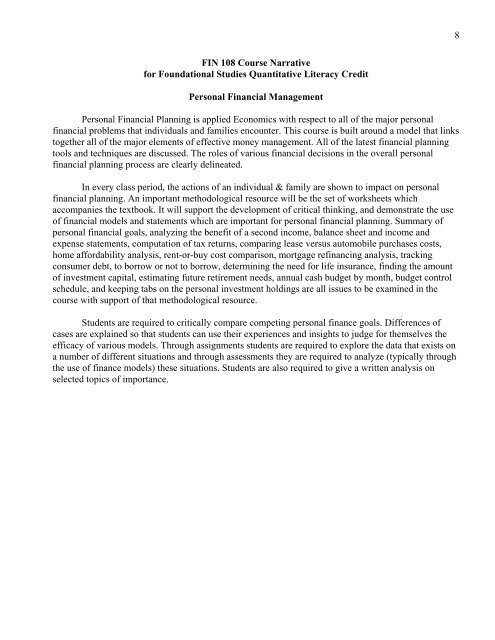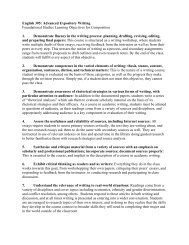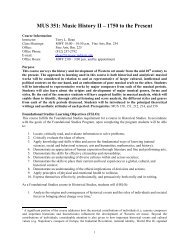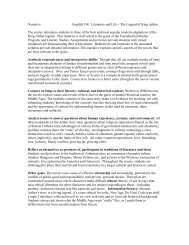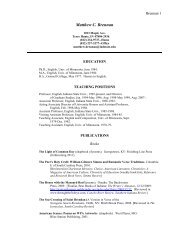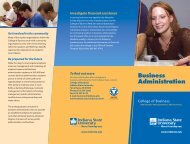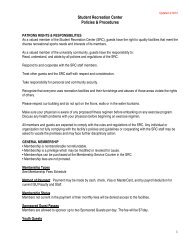8 <strong>FIN</strong> <strong>108</strong> Course Narrative for Foundational Studies Quantitative Literacy Credit Personal Financial Management Personal Financial Planning is applied Economics with respect to all of the major personal financial problems that individuals and families encounter. This course is built around a model that links together all of the major elements of effective money management. All of the latest financial planning tools and techniques are discussed. The roles of various financial decisions in the overall personal financial planning process are clearly delineated. In every class period, the actions of an individual & family are shown to impact on personal financial planning. An important methodological resource will be the set of worksheets which accompanies the textbook. It will support the development of critical thinking, and demonstrate the use of financial models and statements which are important for personal financial planning. Summary of personal financial goals, analyzing the benefit of a second income, balance sheet and income and expense statements, computation of tax returns, comparing lease versus automobile purchases costs, home affordability analysis, rent-or-buy cost comparison, mortgage refinancing analysis, tracking consumer debt, to borrow or not to borrow, determining the need for life insurance, finding the amount of investment capital, estimating future retirement needs, annual cash budget by month, budget control schedule, and keeping tabs on the personal investment holdings are all issues to be examined in the course with support of that methodological resource. Students are required to critically compare competing personal finance goals. Differences of cases are explained so that students can use their experiences and insights to judge for themselves the efficacy of various models. Through assignments students are required to explore the data that exists on a number of different situations and through assessments they are required to analyze (typically through the use of finance models) these situations. Students are also required to give a written analysis on selected topics of importance.
9 Annotated Schedule Fall 2010 <strong>FIN</strong> <strong>108</strong> Personal Financial Management Course Tentative Sequence Plan For Twice‐Week Class Meetings ( Monday & Wednesday) Date Topic Wednesday, August 25, 2010 Ch1 ‐ Understanding the Financial Planning Process Rewards of sound financial planning, The personal financial planning process, Fom goals to plans‐a lifetime of planning, The planing environment, Your personal income determinants, using Personal Financial Planners Worsheet: Summary of Personal Financial Goals Wednesday, September 01, 2010 Ch2 ‐ Your Fin. <strong>State</strong>ments & Plans Mapping out your Financial Future, The time value of money, Preparing a statement of your financial condition, Measuring your income and expense, Preparing your personal financial statements, Setting up a cash budget Worksheets: (1) Analysing the benefit of a second income; (2) Balance sheet; (3) Income and expense statement; and (4) Annual cash budget by month Learning Objectives FSLO 1, 5 & 8 QLLO 1 & 2 S&ALO 1 FSLO 1, 3 & 7 QLLO 1, 2 & 3 S&ALO 1, 2, 3, & 4 Monday, September 13, 2010 Monday, September 20, 2010 Monday, September 27, 2010 Monday, October 04, 2010 Monday, October 11, 2010 Monday, October 18, 2010 Wednesday, October 20, 2010 Wednesday, October 27, 2010 Ch3 ‐ Managing Your Taxes Principles of federal income taxes, Why taxable income matters, Calculating and filling your taxes, Effect tax planning, other forms of personal taxes Worksheets: (1) 2010 Tax return form (form 1040EZ); and (2) 2010 form 1040 September 15 Written Essay # 1 is due: Comment on the US tax system fairness Ch4 ‐ Management of Cash & Savings The role of cash management in personal financial planning, Today's financial services marketplace, Various cash management products, Establishing a savings program, Keeping a checking account Worsheet: An account reconciliation form statement Ch5 ‐ Making Auto & Housing Dec. Buying or leasing an automobile, Meeting housing needs, How much housing can you afford, The rental option, The home‐buying process, Financing the transaction Worksheets: (1) comparing automobile lease to buy; (2) home affordability analysis; and (3) rent‐or buy house cost comparison; (4) Mortage ref. analysis Ch 6 ‐ Borrowing on Open Account Basic concepts of credit, Types of open account credit, Obtaining and managing open account credit, Using credit wisely. Ch 7‐ Using Consumer Loans Basic features of consumer loans, Managing your credit, single‐payment loans, Installement loans, student loans Worsheets (1) Tracking your consumer debt; and (2) To borrow or not to borrow October 13 Written Essay # 2 is due: What are the implications of personal bankruptcy filings? Ch 8‐ Insuring Your Life Basic insurance concepts, How much life insurance is right for you, What kind of policy is right for you; Key features of life insurance policy Worsheet: Determining the need for life insurance Ch 9 ‐ Insuring Your Health The need for health care insurance coverage, Types and sources of health care plans, Medical expense coverage and policy provisions, Long‐term care insurance, Disability income insurance, Buying health care insurance Worksheets: (1) Estimating disability income insurance needs; (2) Health care plan checklist Ch 10‐ Protecting Your Property Basic principles of property insurance, Homeowner's insurance, auto insurance, Other property and liability insurance, Buying insurance and settling claims FSLO 1 , 2, 5, & 10 QLLO 2, 3 & 4 S&ALO 1, 2, & 3 FSLO 1, 2, 3, 5, & 7 QLLO 2, 3 & 4 S&ALO 1, 2 & 3 FSLO 1, 2, 3, 5, 7, & 8 QLLO 1, 2, 3 & 4 S&ALO 1, 2 & 3 FSLO 1, 2, 3, 5, 7, & 8 QLLO 1, 2, 3 & 4 S&ALO 1, 2 & 3 FSLO 1, 2, 3, 5, 7, 8, & 10 QLLO 1, 2, 3 & 4 S&ALO 1, 2 & 3 FSLO 1, 2, 3, & 5 QLLO 1, 2, 3 & 4 S&ALO 1, 2 & 3 FSLO 1 & 5 QLLO 1 & 2 S&ALO 1 FSLO 1 & 5 QLLO 1 & 2 S&ALO 1, 2, & 3


